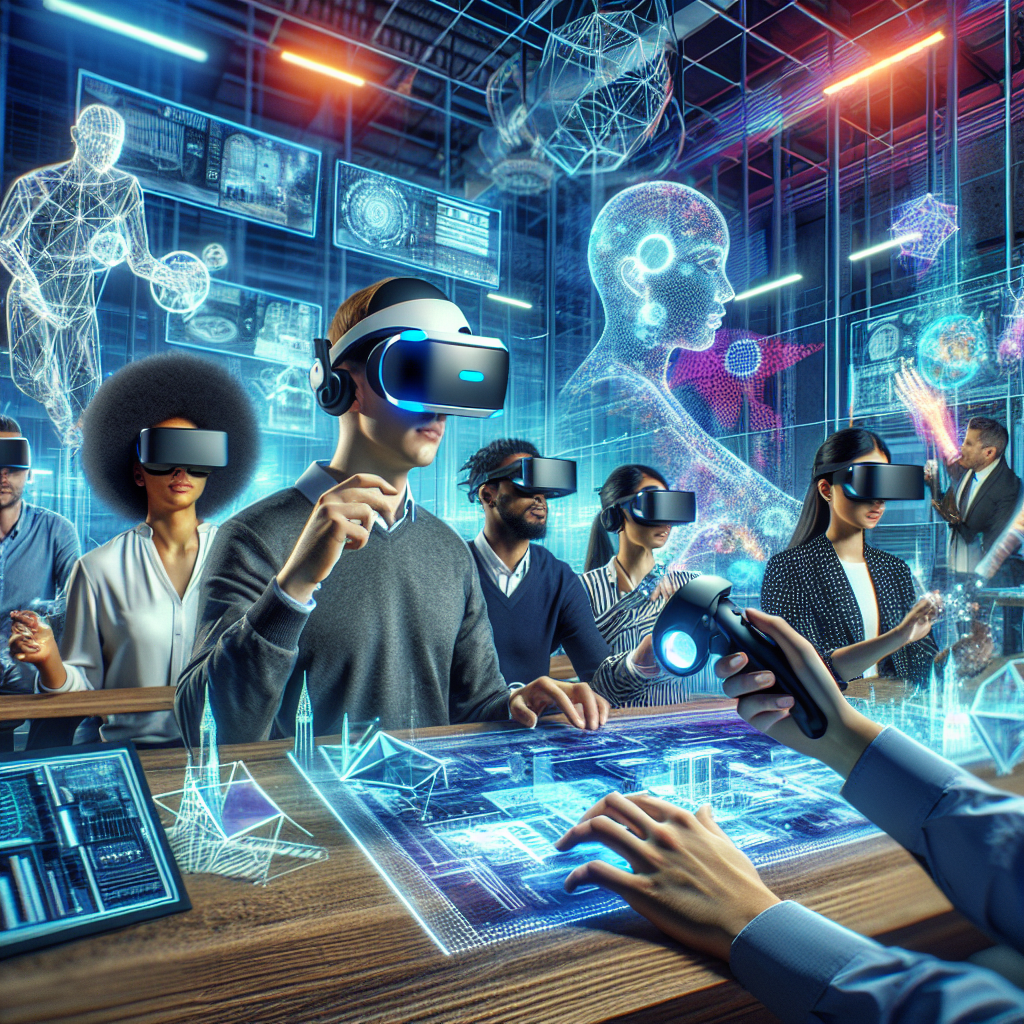Virtual Reality: The Future of Design Collaboration
In recent years, virtual reality (VR) technology has made significant strides in various fields, from gaming and entertainment to education and healthcare. One area that is benefitting greatly from the advancements in VR is design collaboration. Designers and architects now have access to powerful tools that allow them to visualize, create, and share 3D models with colleagues and clients in a truly immersive way. This has opened up a whole new world of possibilities for the future of design collaboration.
The use of VR technology in design collaboration is revolutionizing the way professionals work together on projects. By creating a virtual environment where multiple users can interact with and manipulate 3D models in real-time, designers are able to streamline their communication, enhance their creativity, and ultimately deliver better results. Let’s take a closer look at how VR is shaping the future of design collaboration.
One of the key benefits of using VR for design collaboration is the ability to create a shared virtual space where team members can meet and work together, no matter where they are located geographically. This is particularly important in today’s globalized world, where teams often consist of members from different countries and time zones. By using VR technology, designers can collaborate in real-time, regardless of their physical location, which can greatly improve efficiency and productivity.
In addition, VR allows designers to immerse themselves in their creations in a way that was never possible before. By putting on a VR headset, designers can “step inside” their 3D models and explore them from every angle. This not only allows for a more intuitive understanding of the design, but also fosters a greater sense of presence and connection with the project. This level of immersion can lead to more creative and innovative solutions, as designers are able to experiment and test ideas in a realistic and interactive environment.
Furthermore, VR technology enables designers to convey their ideas more effectively to clients and stakeholders. By creating immersive virtual experiences, designers can help clients visualize the final product before it is built, which can lead to better decision-making and ultimately, more successful projects. Clients can “walk through” the virtual space, make changes in real-time, and provide feedback directly to the design team, leading to a more collaborative and transparent design process.
Moreover, VR technology can also be used as a tool for training and education in the design field. By creating virtual design studios and architecture firms, students and professionals can gain practical experience in a safe and controlled environment. They can practice design concepts, explore new ideas, and develop their skills without the need for expensive physical prototypes. This can help bridge the gap between theory and practice, and prepare designers for the challenges of the real world.
In conclusion, virtual reality is reshaping the future of design collaboration, offering new possibilities for communication, creativity, and innovation. By creating shared virtual spaces, immersing designers in their creations, enhancing communication with clients, and providing a platform for education and training, VR technology is revolutionizing the way designers work together on projects. The future of design collaboration looks bright, with VR leading the way towards more efficient, effective, and engaging design processes.
FAQs:
Q: How expensive is VR technology for design collaboration?
A: The cost of VR technology can vary depending on the type of hardware and software required. However, with the increasing availability of more affordable VR headsets and programs, the barrier to entry for using VR in design collaboration is becoming lower.
Q: Is VR technology difficult to learn and use for design collaboration?
A: While there may be a learning curve for some users, many VR tools are designed to be intuitive and user-friendly. With practice and training, most designers can quickly adapt to using VR technology for design collaboration.
Q: Are there any limitations to using VR for design collaboration?
A: While VR technology has many benefits, there are still some limitations to consider. For example, not all team members may have access to VR headsets, which can limit collaboration. Additionally, the quality of the virtual environment may vary depending on the hardware and software used. However, as the technology continues to evolve, these limitations are gradually being addressed.
